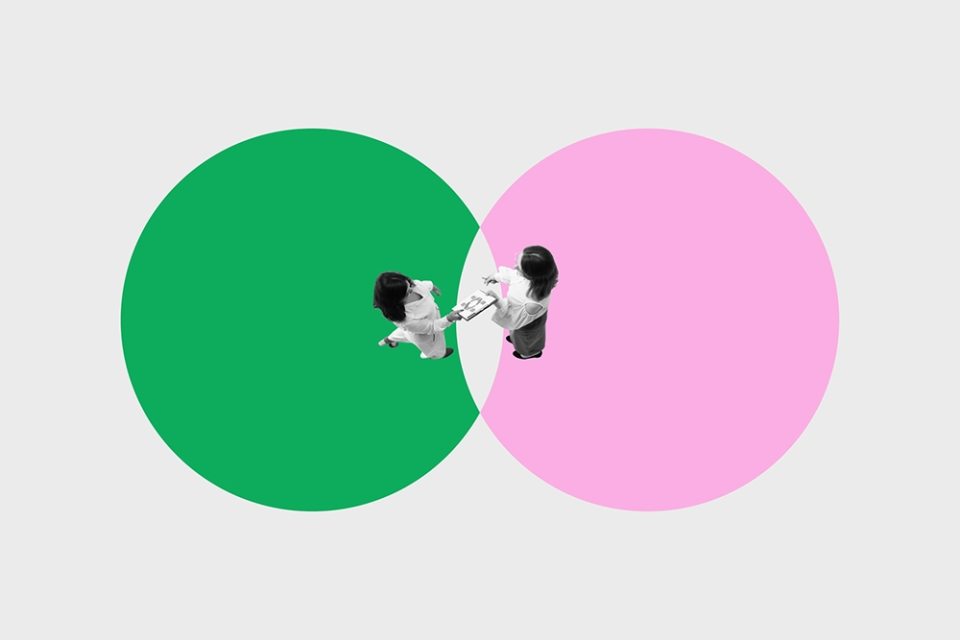Huthwaite International was formed by a small group of psychologists and consultants who adopted a behaviourist approach to management interaction and skills training.
The group pioneered the sales methodology known as SPIN Selling and the use of a research tool, now widely used and universally known as behaviour analysis.
The SPIN Selling methodology gives salespeople a deeper understanding of their customers’ needs, allowing them to provide effective solutions. Behaviour analysis is a method for observing, categorising and quantifying objectively what people say to each other in interactive situations such as meetings, job interviews and training sessions.
This allowed researchers to predict which behaviours were associated with successful and unsuccessful outcomes in different situations. From this data researchers built a success model, the ideal profile of behaviours which are most likely to give a successful result.
Huthwaite International can train people to modify their existing behaviour to match the success model more closely improving the probability of success.
The research
Very early in the research project it became apparent that there was a significant difference between what top sales performers said they did and what they were actually doing to win business.
The problem seems to be that the things which make top performers consistently good are the things they do naturally, whereas the points they will stress in an interview, or pass on to others as tips, are the small extra sophistications they have either invented themselves or had mastered over time.
Having identified this discrepancy between perception and reality, the Huthwaite team implemented a programme of field accompaniments to conduct live behaviour analysis of sales transactions.
The initial findings were so controversial in their contradiction of conventional sales theory that the scope of the study was expanded several times until the research results were statistically incontrovertible.
The nine key behaviours which lie at the heart of the SPIN Selling metho are the distilled results of this research.
The top three findings in the SPIN Selling research
1. All needs are not the same
There is critical distinction between needs expressed as dissatisfaction's and needs which are expressed as a desire for a solution. In major sales, the former implied needs have no relationship with success. However, explicit needs are key indicator of a sales success.
Successful salespeople have a technique which helps the customer to express their needs in an explicit form using a four-stage framework.
Situation Questions
Gather background information and understand the context of the sale.
Problem Questions
Explore the customer’s dissatisfaction's and concerns.
Implications Questions
Develop apparently isolated problems by examining their ‘knock-on’ effect in other areas of the customer’s business.
Need-payoff Questions
Invite the customer to consider the benefits of solving his/her problems and, having done so, to express an Explicit Need for a solution.
2. Closing techniques are counterproductive in major sales
The continual use of closing techniques dramatically reduces the chance of success in large sales. Top performing salespeople do not ask for the order. They propose the highest realistic commitment the customer can give.
Successful salespeople can usually obtain a commitment on their first attempt because they have first shown how they can satisfy the customers explicit needs.
3. Benefit statements are the major cause of objections
Salespeople have been taught to make benefit statements by explaining how their solution will help their customer, but studies show that the easiest way to create an objection is to offer your customer a solution that they have not expressed interest in.
Customers rarely object when they are offered something they have just asked for. Showing how your solutions meets an Explicit Need expressed by the customer is the behaviour most closely associated with sales success.
The application
The SPIN Selling method reproduces the behaviour pattern which makes top salespeople successful.
Learning new skills is not easy. It’s rarely achieved through academic understanding of a different and more effective behaviour model. Developing new skills takes the following sequence:
-
Show and explain the skill model to give a theoretical understanding
-
Give practice opportunities in a controlled environment
-
Give constructive feedback so that trainees can identify and improve areas of weakness
-
Repeat steps two and three until skills are developed sufficiently for use in a live situation
-
Support on-going skill development with observation, feedback and sales coaching on-the-job.
Developing SPIN Selling method skills
SPIN Selling skills are easy to understand but much more difficult to put into practice. Implementation is further complicated by the time scales, budget restrictions and very diverse sales structures of different organisations.
Recognising these varying needs, Huthwaite has designed several implementation options, offering considerable flexibility while retaining the crucial elements of the skill development model described above.
We have the capability to implement international projects worldwide, with 157 expert trainers in 109 countries, providing training in 35 languages.
Programmes can be designed to match the requirements of specific clients, including the development of exercises and case studies that reflect the real selling situation.
Our ultimate objective is to ensure that SPIN training works for our clients. Feedback, and some very objective measurement, including independent studies by third party consultants, shows that it does.
Independent studies show that the typical sales productivity improvement following controlled implementation of SPIN Selling projects is 17%, with individual results ranging from 10% to 63%. What’s more, most studies show that in addition to an increase in sales volumes, many clients experience an increase in sales profitability. This probably explains why these organisations have adopted the SPIN Selling Method.

Download the Science Behind SPIN Selling to learn:
- How you can develop SPIN selling skills
- how successful sellers use SPIN selling to minimise objections
- the verbal behaviours that successful sellers use to make compelling benefit statements.








.webp)